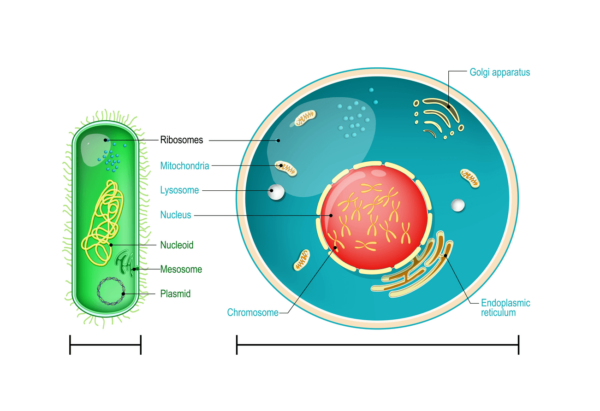Saccharomyces boulardii: a probiotic yeast, not bacteria!
Many people believe that all probiotics are bacteria, however, this is simply not the case. Probiotics can come from a variety of live microorganisms. What makes all probiotics similar is that they provide health benefits when consumed that contribute to the balance of the intestinal flora.
S. boulardii is a live non-colonizing, non-systemic probiotic yeast, with a high growth rate at near-body temperatures, as well as a higher resistance to the gastric environment which allows this yeast to quickly establish, “blooming” soon after its supplementation has begun.
This specific yeast strain has clinically demonstrated anomalous probiotic activity and efficacy, differentiating its mode of action from other widely used bacterial probiotics. In the prevention and treatment of antibiotic-associated, infectious, and functional diarrhea, Saccharomyces boulardii has proven to be a useful probiotic(2). S. boulardii is also useful for treating traveler’s diarrhea, as well as diarrhea induced by infection with the bacterium Clostridium difficile.(3)
How does Saccharomyces boulardii help your immune system?
Several findings suggest that S. boulardii can support both the onset phase of an immune response and the resolution phase.(4)
Effects on the onset phase of an immune response
Research suggests that S. boulardii positively influences the onset phase of an immune response through a general unspecific immune system activation, which can be advantageous for fighting infections. Preclinical evidence demonstrated that S. boulardii could modulate the host’s early immune response towards a more activated state. This may, at least partly, explain why preexposure to S. boulardii is advantageous for increasing the host’s resistance to infections. In the context of various infections, S. boulardii may support a balanced inflammatory response by(5):
- modulating various cytokines;
- inhibiting the maturation, migration, or proliferation of various immune cells;
- stimulation of sIgA release.
Antibody immunoglobulin A, sometimes referred to as sIgA in its secretory form, is involved in the immunological function of mucosal membranes. In the case of the last response, positive modulation of sIgA release following exposure to S. boulardii has been demonstrated in healthy and diseased states(6). SIgA is the first-line defense against pathogens in the intestine, therefore making it a key player in the immune-exclusion mechanisms that inhibit microorganisms from accessing and crossing the intestinal barrier.(7)
Effects on the resolution phase of an immune response
S. boulardii has been shown to participate in the resolution phase of an immune response through the downregulation of pro-inflammatory cytokines or enhancement of the production of anti-inflammatory mediators.
How can Saccharomyces boulardii balance your inflammatory reaction during infections?
A common sign of pathogen infections that causes digestive discomfort is the inflammatory reaction of the host. Pro-inflammatory cytokines are released in the early stage of infection and contribute to the defense against invading pathogens. But pro-inflammatory cytokines not only attack the invaders but can also cause inflammation in the tissue. Hence, anti-inflammatory mediators are needed to manage this inflammatory reaction.
In this way, S. boulardii can support this process by both downregulating pro-inflammatory cytokines and enhancing the production of anti-inflammatory mediators.
Does Saccharomyces boulardii provide any indirect support to the immune system?
Yes! There are several complementary modes of action S. boulardii can have a positive indirect supporting role on your immune system:
- Prebiotic effect: cell wall components of S. boulardii consisting of beta-glucans, mannoproteins, and chitin can increase short-chain fatty acid production.(8)
- Anti-pathogenic action: S. boulardii ’s neutralizing effect on pathogen-virulence factors is possible through its pathogen binding capacity or by secreting factors such as proteases able to degrade toxins or their receptors.(9)
- Restoration of gut microbiota: S. boulardii has been associated with a faster re-establishment of the gut microbiota following exposure to antibiotics or infectious agents. S. boulardii also helps restore the balanced state of the immune system following disruptions of the gut microbiota.(10)
- Preserved tight junction: positive effects on the gut barrier function following exposure to S. boulardii throughout an infection have been consistently reported. This, in turn, supports the natural mechanism of immune exclusion.(11)
Hopefully, by now you understand the immense benefits S. boulardii can have on your microbiome and immune system as well as numerous beneficial indirect effects. As mentioned before, because S. boulardii is a unique probiotic yeast and not bacteria, it has the benefit of being able to be used in conjunction with antibiotics during treatment making it more widely useable and effective!
Saccharomyces boulardii’s Tropical History
French microbiologist, Henri Boulard, was the first to discover this yeast while searching in Southeast Asia for a new heat-resistant strain of yeast to be used for fermentation. During his travels, he noticed that chewing the skin of lychee and mangosteen or drinking specific teas helped to stop the development of cholera symptoms. Boulard later was able to isolate the agent responsible, a strain of yeast belonging to the genus Saccharomyces, which he then named after himself, “Saccharomyces boulardii.”




